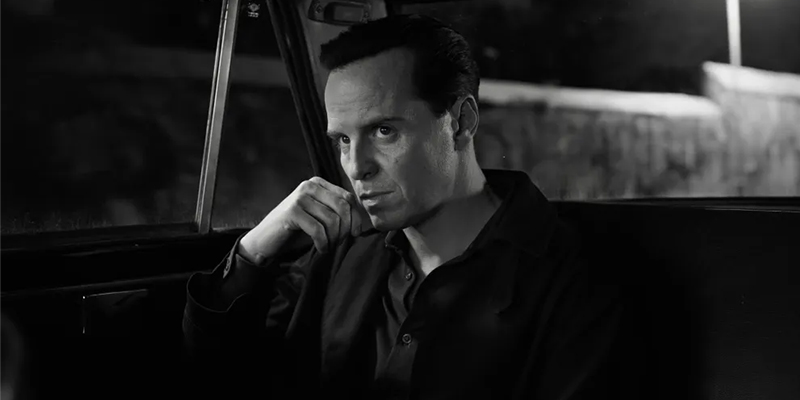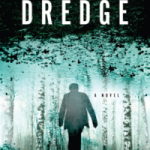The detail about the new Ripley confined series, which premiered on Netflix this week, is that its foremost actor, Andrew Scott, is incredibly great. He’s very excellent in it, and he’s exceptionally very good in all the things. I may well even say that he’s the ideal actor performing nowadays. We don’t genuinely require yet another adaptation of The Proficient Mr. Ripley, considering the fact that we already have Anthony Minghella’s masterpiece from 1999 and René Clément’s Purple Noon from 1960 (not to point out Wim Wenders’s outstanding 1977 movie The American Friend, an adaptation of Ripley’s Activity, and two other movies, a 2002 Ripley’s Activity and a 2005 Ripley Below Ground). All of these have introduced us commonly exceptional Ripleys in the sorts of Matt Damon, Alain Delon, Dennis Hopper, John Malkovich, and Barry Pepper, which is to say that, if the new Netflix series hadn’t forged Andrew Scott, I could not have felt these types of a determined will need to look at.
Made, composed, and directed by Steven Zaillian, Ripley unfolds as a noir, in punchy, digital black-and-white. In the first shot of Andrew Scott’s experience, his dark eyes search black and chilly, like swimming pools of crude oil. In Ripley, Scott has managed to evacuate pretty much all humanity and experience from his entire body he embodies the sharp contrast of a entire body which appears to be human but lacks a human’s soul.
That’s the factor about Scott, who quite a few of us found out from his convert as the taunting psychopath Moriarty in the BBC Sherlock sequence, then uncovered yet again as a youthful priest in disaster, combating romantic attraction to a lady in Phoebe Waller-Bridge’s Fleabag not only is he an actor with rigorous charisma, but he is also uniquely capable to command a huge gamut of thoughts. Any time I check out him, I assume of people sliding adjustment scales in photograph modifying software—how 1 drag of a toggle to the proper or remaining can take the very same image and drain it or fill it up with warmth—and I like to think about, visually, the configurations he’s working with for that individual functionality. In Ripley, that imaginary cursor lies at its farthest axis.
This mode of characterization helps make for a compelling antihero, but also feels fairly like an intervention in the Ripley canon. Minghella’s The Talented Mr. Ripley is absolutely nothing if not psychological it stars Matt Damon as a young, giddy and thoroughly disturbed interloper who falls in enjoy with a beautiful male and a stunning way of life, and then does what ever he can to maintain whatsoever he can have of it. It is as heartbreaking as it’s terrifying, a analyze in explosive pathos and even, maybe, how the pursuit of neighborhood only outcomes in larger loneliness. But the novel, published in 1955 by Patricia Highsmith, features us a slicker, slimier sociopath. We’ve seen an unfeeling Ripley ahead of, but not in a though, and not as perfectly as the 1 Andrew Scott offers to us, which is an uncomfortable but conniving lizard-person.
The sequence commences in New York, in the 1960s, the place Tom Ripley operates every day as a little-time con gentleman working a faux selection company created to defraud ordinary folks of little quantities. He’s tracked down by a non-public detective (Bokeem Woodbine) hired by the delivery magnate Herbert Greenleaf (Kenneth Lonergan), who has heard that he is familiar with his wayward son Dickie (Johnny Flynn). Dickie has been on a long lasting trip in Italy for several years, spending dollars, lying on the beach front, and “functioning” as a “painter,” and his father thinks it’s large time he returns to confront his tasks. He sends Tom, all costs compensated, to Italy to retrieve him. But, of study course, when Ripley comes there and gets a flavor of Dickie’s way of life, he decides to continue to be indefinitely, at whatsoever price tag.
It’s not particularly that he enjoys the coastal Italian village that Dickie lives in, or feels any unique fondness for the quirky Italian denizens if nearly anything, he appears to be a lot more aggravated and inconvenienced by all the things all around him. He’d virtually seem to be motivationless in his crystal clear evil if it weren’t for the methods his darting eyes catch objects he likes, items he needs. Possibly Ripley doesn’t imagine Dickie warrants these types of objects. Probably Dickie is 1 of those objects.
Dickie is a very little set-off by Tom’s bizarre vibe—over-serious, graceless, a bit gauche—but Dickie’s American writer companion, his type-of-girlfriend Marge Sherwood (Dakota Fanning), is both of those suspicious and disapproving of the new addition to their team. And Ripley is jealous of Freddy Miles (Eliot Sumner), a rich buddy of Dickie’s who begins to crash their outings. The far more men and women enter the photo, the additional tense things turn out to be. If you know anything at all about the character, you know that Ripley will turn out to be a serial killer, little by little and systematically acquiring rid of everyone who stands in his way as he climbs toward the items he desires.
Ripley is very paranoid, another of the extant themes from Highsmith’s novel, but somewhat than that becoming some indication of repressed morality or a cosmic punishment for his sins, it feels additional like basically yet another facet of his chemical makeup, a person that generally prioritizes his very own passions. Just simply because he’s knowledgeable of his individual criminality doesn’t suggest he has any regrets or hesitations. At all.
I like the cinematography and in general manufacturing style of Ripley. For a tale that spends so substantially time on aesthetics, from Dickie’s art hobby to the all-natural, rugged beauty of the spots, it’s putting that it’s all in this sort of crisp black, white, and gray. But it would make feeling it’s a decreased, targeted, gelid lens. It’s how Ripley sees the environment. The sharpness of the contrast all-around material objects emphasizes the matters that are significant to him, though the azure waves and empyrean skies of Southern Italy melt into uninteresting grayscale.
More than that, nevertheless, the clearly show plays wonderful focus to the suitable varieties of facts, especially “systems.” For case in point, there’s a variation involving the pristine machinations of the write-up-office environment, the spot the place Ripley feels at property scheming, and the chipping, limitless stairs of Italy, the place Ripley will have to get his bearings to mount his gambit.
Observing him do all this isn’t so significantly thrilling as it is riveting there’s no emotional motive to hook up to the character, which in some strategies virtually helps make him extra watchable. He’s one thing of a riddle, alternatively than a surrogate he’s a residing black hole, an unknowable entity, mesmeric for his impersonal potential for dismantling and swallowing the entire world about him.











More Stories
6 Crime and Horror Books Featuring Unusual Narrators
The Ending Of ‘Presumed Innocent’ Gives Carolyn Polhemus A New Killer
Book Release: Night Work by Pete Duval